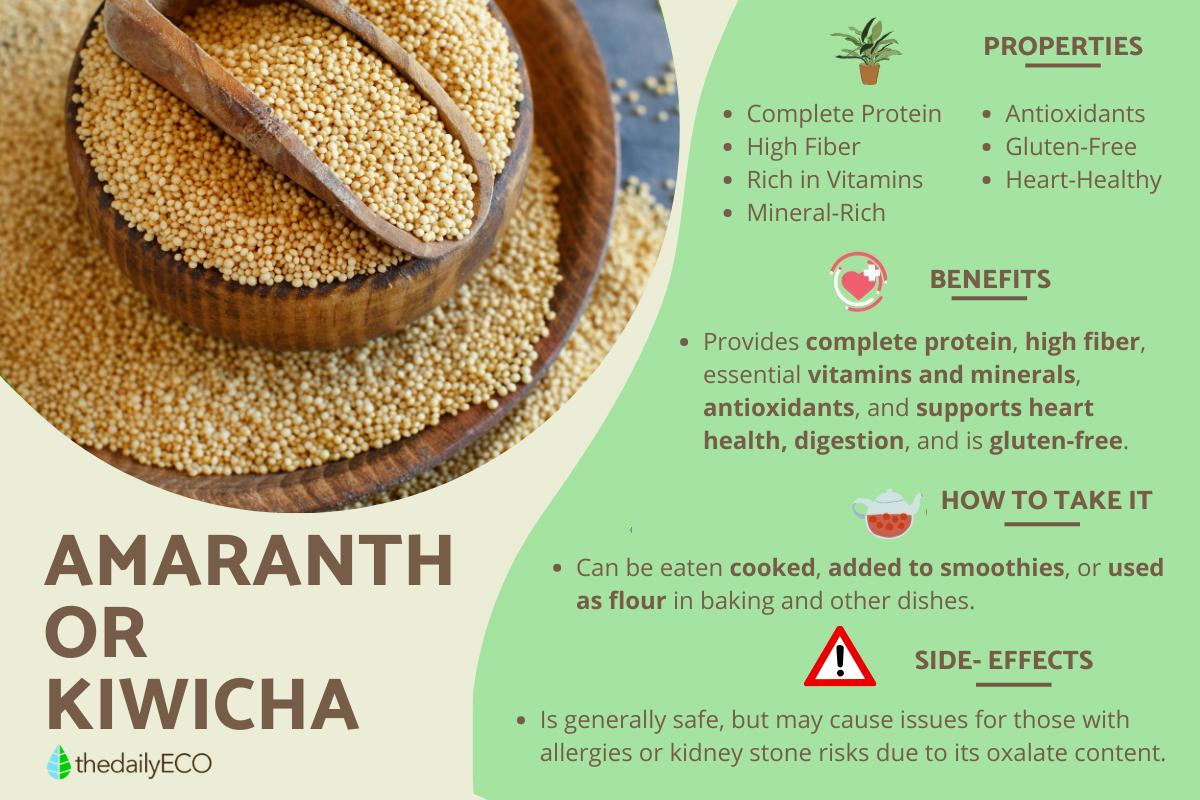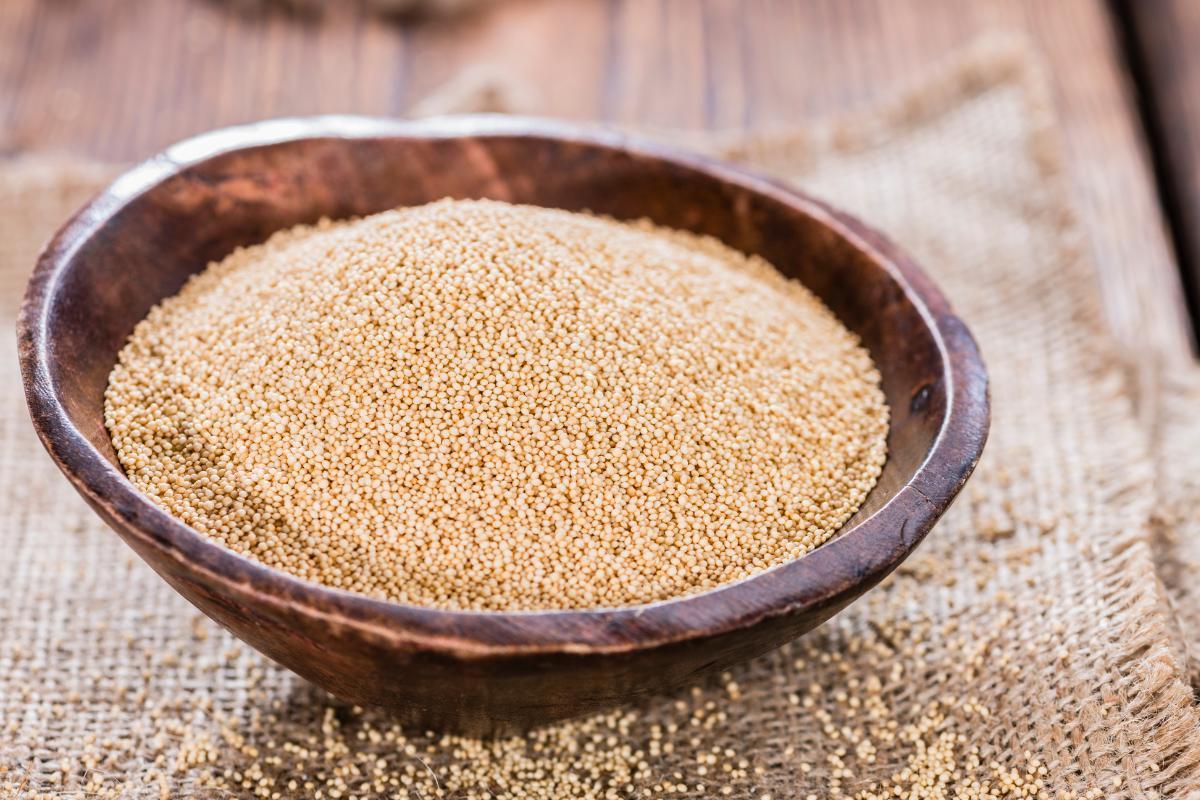What Does Amaranth Do to the Body?


Amaranth, an ancient grain making a modern comeback, is often hailed as a superfood due to its impressive nutritional profile and health benefits. Packed with essential vitamins, minerals, and protein, this gluten-free grain can have a profound impact on the body, supporting everything from heart health to digestion. Whether you're looking to boost your energy, strengthen your immune system, or improve overall wellness, amaranth offers a natural, nutrient-dense solution.
In this article by thedailyECO, we’ll explore how amaranth works in the body and why it deserves a spot in your diet.
Properties of amaranth
Amaranth, also known as kiwicha, is a highly nutritious plant-based food, known for its nutrient profile.
It is especially valued for being one of the rare plant sources of complete protein, meaning it contains all nine essential amino acids that the body needs to function properly. This makes amaranth a great option for those following plant-based diets or looking to increase their protein intake.
Amaranth is rich in:
- Protein: it is one of the best plant-based sources of protein, containing nearly all essential amino acids.
- Minerals: amaranth provides a variety of important minerals such as zinc, iron, magnesium, phosphorus, and calcium, which support overall health.
- Vitamins: it contains a range of B vitamins, including B1 (thiamine), B2 (riboflavin), B3 (niacin), and folic acid (important for cell growth and development).
- Fiber: its high fiber content supports digestive health and helps regulate bowel movements.
Want to know more about the power of seeds? Check out our in-depth guide to their amazing varieties and uses.

Benefits of amaranth
As mentioned before, amaranth, has numerous health benefits. Here are some of its key advantages:
- Amaranth is rich in dietary fiber, which aids digestion and helps prevent constipation. Its high fiber content also helps regulate the absorption of sugars in the blood.
- Amaranth contains healthy fats, including polyunsaturated fats, which are beneficial for heart health. Studies have shown that amaranth may help lower LDL cholesterol levels, contributing to improved cardiovascular health.
- Amaranth contains tryptophan, an essential amino acid that plays a role in the production of serotonin, a neurotransmitter associated with mood regulation. Consuming amaranth may support emotional well-being.
- The fiber content in amaranth helps manage blood sugar levels by slowing the absorption of carbohydrates, making it a suitable option for those looking to control their glucose levels.
- Amaranth is a complete protein, containing all nine essential amino acids. This makes it a valuable food for vegetarians and vegans. It is also a naturally gluten-free grain, making it a suitable option for individuals with celiac disease or gluten sensitivity.
- Amaranth is rich in antioxidants, including flavonoids and polyphenols, which can help protect cells from damage caused by free radicals.
- Amaranth is a relatively low-calorie grain, making it a healthy choice for weight management.
Intrigued by ancient grains like amaranth? Discover another nutrient-packed option in our article on a lesser-known super grain, known as kamut.

How to consume amaranth
Amaranth is a versatile plant that offers many culinary possibilities. Whether you enjoy its leafy greens or its nutritious seeds, amaranth can be incorporated into your diet in various ways.
The leaves of the amaranth plant can be cooked and eaten like spinach, providing a nutritious and flavorful addition to your meals. They are rich in vitamins and minerals, making them a healthy choice for both vegetarians and meat-eaters.
Amaranth seeds can be ground into flour, which is an excellent alternative to traditional wheat flour. This gluten-free flour is perfect for baking breads, biscuits, and pastries. To make homemade amaranth flour, simply blend the seeds in small batches. For optimal results in recipes like cakes or biscuits, it's recommended to combine amaranth flour with wheat flour in a 1:1 ratio.
Beyond baking, amaranth seeds can be enjoyed in their whole form. Add them to soups, salads, yogurt, or ice cream for a boost of nutrition and texture.
Here are a few recipe ideas:
- Pancakes: Combine amaranth, grated soft cheese, an egg, a pinch of salt and pepper, spices to taste, and optional wheat flour or breadcrumbs. Cook in a little oil and serve with a fresh green salad.
- Smoothie: Blend your favorite fruit with amaranth and water for a nutritious and filling breakfast.
- Hotcakes: Replace half of the wheat flour in your hotcake recipe with toasted amaranth flour for a healthier option.
Experiment with different recipes and discover the many delicious ways to enjoy this superfood.

Contraindications of amaranth
Amaranth is often considered a gentle and easily digestible grain for most people. Its high fiber content can contribute to a healthy digestive system. However, like any food, individual tolerance can vary.
Individuals with known allergies or intolerances to amaranth should avoid consuming it. If you have specific dietary concerns, it's always advisable to consult with a healthcare professional before trying new foods.
Amaranth does contain oxalates, which can potentially interfere with calcium absorption. This might be a consideration for individuals with a history of kidney stones. However, it's important to note that consuming amaranth in moderation as part of a balanced diet is generally not a cause for concern for most people.
Curious about other health-boosting foods? Discover another nutrient powerhouse that can enhance your wellness journey.
If you want to read similar articles to What Does Amaranth Do to the Body?, we recommend you visit our Healthy foods category.
- Reyna Trujillo, T. (1988). Recent research on amaranth. Mexico: Institute of Geography, National Autonomous University of Mexico.
- Amaranth: modern perspectives for a forgotten crop. (1987). Mexico: Villicaña.








